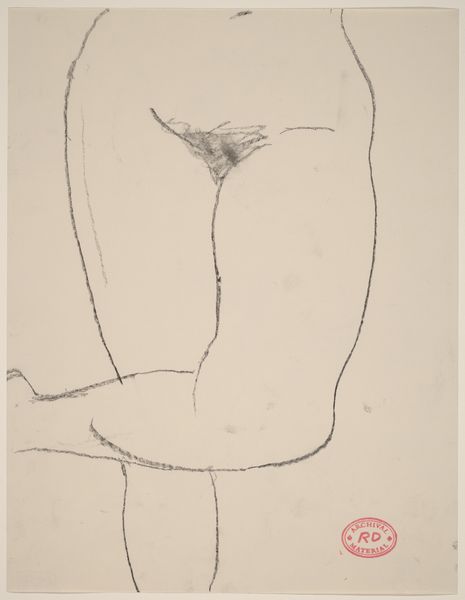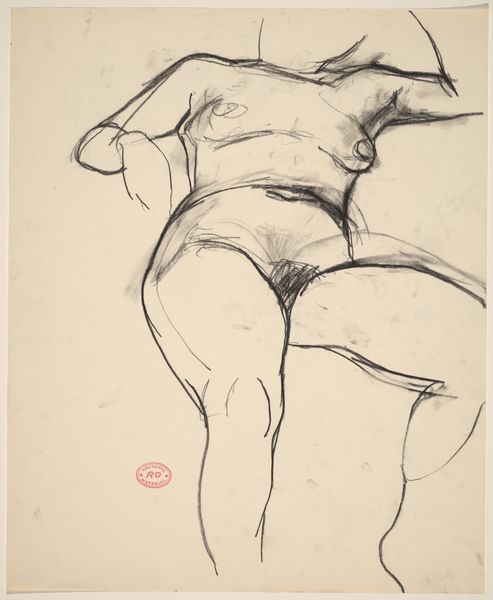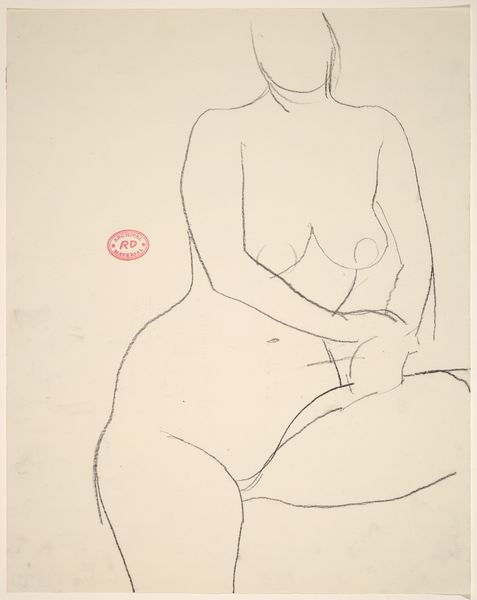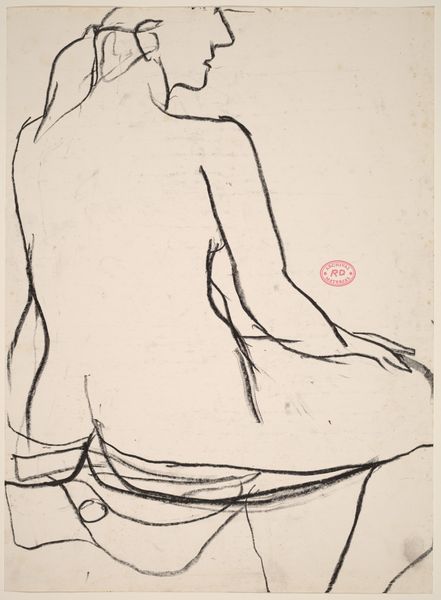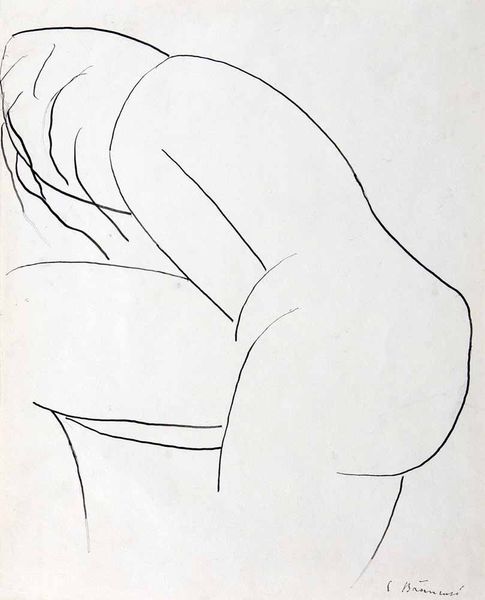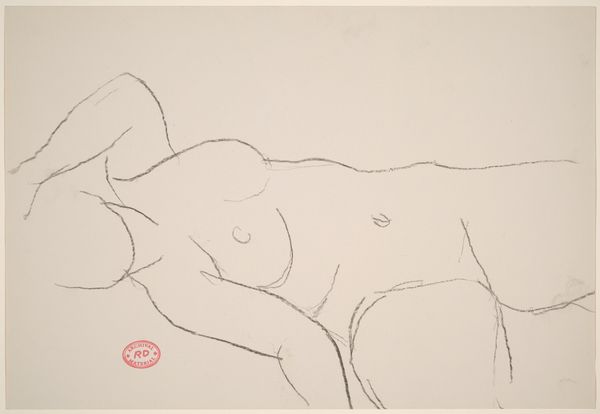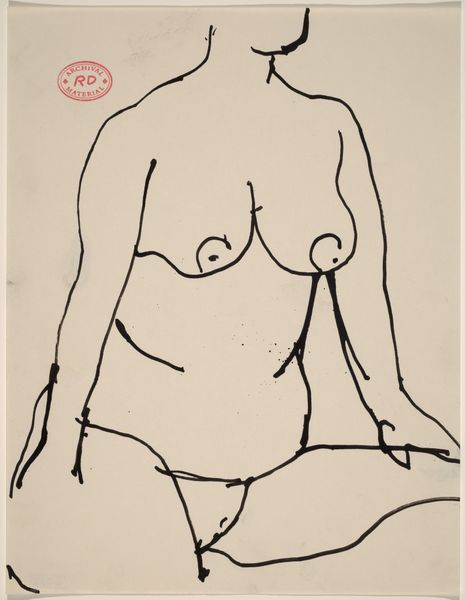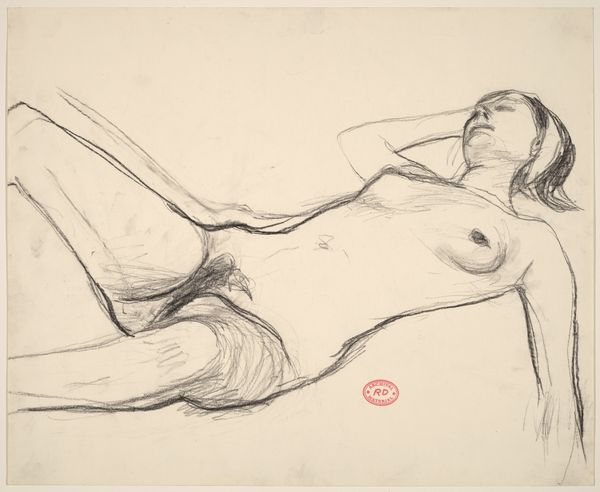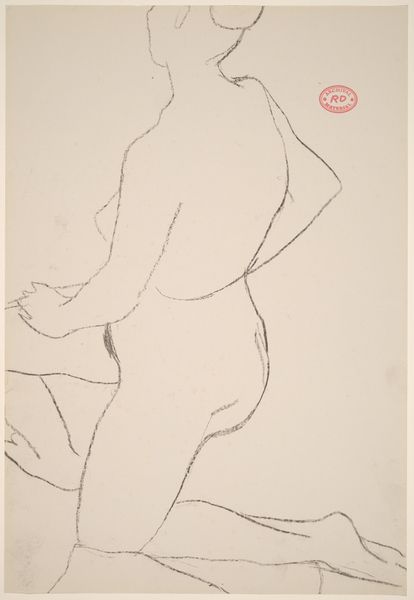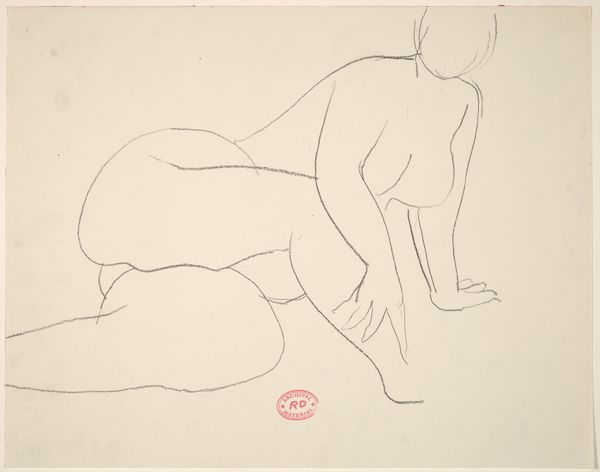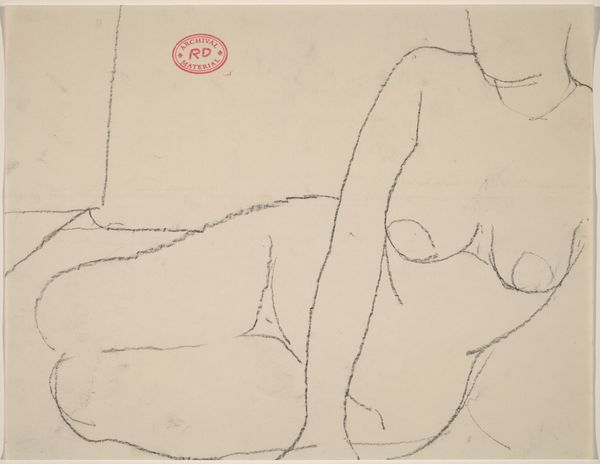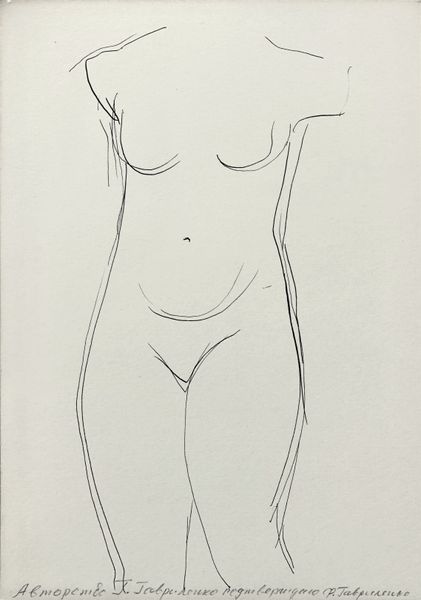
Dimensions: image: 18.7 x 23.5 cm (7 3/8 x 9 1/4 in.) sheet: 20.2 x 25.2 cm (7 15/16 x 9 15/16 in.) mat: 56.3 x 45.8 cm (22 3/16 x 18 1/16 in.)
Copyright: National Gallery of Art: CC0 1.0
Editor: Here we have Alfred Stieglitz's photograph "Georgia O'Keeffe" from 1922, a gelatin-silver print. It's a very intimate portrait; it’s cropped in such a way that it almost abstracts the body. What statements do you believe Stieglitz was trying to make about representation or even objectification? Curator: Stieglitz’s photographs of O'Keeffe were part of a larger project to establish photography as a fine art and challenge conventional Victorian-era morality. His intimate portraits of O'Keeffe, including this nude, were intentionally provocative, meant to dismantle the romanticism prevalent in art at the time and engage with emerging modernist aesthetics. He was playing with the evolving public role of art. Editor: So the goal wasn’t necessarily a celebration of female beauty, but to challenge the institutions shaping its perception? Curator: Precisely. The images deliberately departed from the tradition of idealizing the female form. These photos challenge the conservative social mores that were very much embedded in the art world itself. Do you think that his connection with O'Keeffe adds another layer to that dismantling? Editor: Definitely. The relationship itself became a public performance of sorts. Their artistic partnership and marriage played a role in legitimizing O'Keeffe's own career. Curator: Right. The display and reception of Stieglitz's photographs significantly boosted her visibility. Stieglitz strategically used his position within the art world to promote both his work and hers, navigating the gendered dynamics of the art market at the time. This photograph and its display became a turning point, showcasing how the personal and political intersect within artistic representation. Editor: It's fascinating how photography, through Stieglitz's lens, served as a battleground for challenging norms and redefining art's public role. I'll remember that art also reflects power dynamics within society and institutions.
Comments
No comments
Be the first to comment and join the conversation on the ultimate creative platform.
